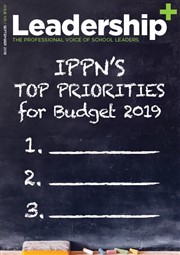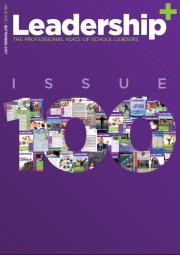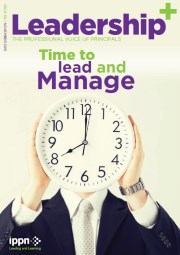E-Scéal 133: Establishing New Boards of Management 2007
- Published: 31 October 2007
Hopefully the process of establishing your school's new Board of Management is well under way. Before the midterm break the Principal Advice service coordinated by IPPN Support Office was extremely busy with requests for information and guidelines on various matters relating to the new BoMs.
The DES, in consultation with the Education Partners, has produced an updated version of the Constitution of Boards and Rules of Procedure for Boards of Management. In addition, a further Information Manual has been produced offering practical guidance in relation to the creation and function of the new Boards.
Unfortunately these two important and essential documents will not reach schools for sometime yet. Both documents are available on the Department of Education website and, for your convenience, IPPN has arranged with the DES to make them easily accessible through our own website.
While acknowledging the Principal does not carry responsibility for the establishment of a school's BoM, in real terms many Chairpersons depend on you, the Principal, for information and advice. It is important to note that there are several minor but significant changes to procedures for establishing new BoMs and we strongly recommend that you are familiar with and have access to these two key documents.
Is muidne le meas,
Larry Fleming, Seán CottrellClick here to download Constitution of Boards and Rules of Procedure and Information Manual for new Boards of Management
E-Scéal 132: Commercialism in Primary Schools
- Published: 25 October 2007
IPPN is supporting a one-day conference on commercialism in Irish education in Trinity College Dublin on Saturday 17th November 2007. "Education: Whose Business is it Anyway?" will feature speakers from all areas of Irish education with the keynote address being given by Prof Alex Molnar of Arizona State University.
Many in the educational community are concerned about the effects of supermarket voucher schemes in primary schools, junk food vending machines in PPP secondary schools and an increasing dependency on corporate funding in Higher Education. This conference will highlight the dangers for education in following a commercial agenda and explore positive responses from educators, parents and students to this trend.
To better understand principals' experiences and perspectives on this issue, we would ask you to complete our short on-line survey - click here to visit our survey
To register for this conference please visit www.commercialfreeeducation.com
Is sinne le meas,
Larry Fleming | Seán Cottrell
President | Director
E-Scéal 131: Reclaiming the Summer - Survey Results
- Published: 05 October 2007
Thank you for completing our recent on-line survey - Reclaiming the Summer. The response rate has been phenomenal and there are still approximately 100 surveys being completed on a daily basis. To date 1,800 completed surveys have been processed and analysed. In order to see these results, please click on the link below or visit the home page of www.ippn.ie. The data emerging from this survey provides considerable evidence of wide spread erosion of Principals' holiday time.
When all surveys have been collated a full report will be published on our website and a copy sent to the INTO. The clarity and uniformity of Principals' opinion as evidenced in this survey will leave nobody in doubt about the seriousness of this issue.
Meanwhile, we look forward to meeting you at your County Network Meeting later this month.
Is sinne le meas
Larry Fleming | Seán Cottrell
President | Director
E-Scéal 130: Principals Deeply Concerned with New Performance Management Role
- Published: 04 October 2007
E-Scéal 129: Letter to INTO re Principals' Working Conditions
- Published: 01 October 2007
Since the beginning of September, IPPN's Support Office has received an unprecedented number of telephone calls and emails from Principals frustrated at the degree to which their summer holidays have been eroded due to the ever-increasing demands of school-related work.
In recent years, there has been a steady increase in the amount of time Principals have been required to work during official school holidays. There is no need to tell you the reasons why this is so. Boards of Management have become more dependent on the Principal for much of its work due to Board members being unable, unavailable or unwilling to carry out their prescribed roles. The net result is that for schools to function properly, Principals end up carrying responsibilities and workload which rightfully belong to the Board of Management.
This can only be described as a gradual and real deterioration of working conditions. It's remarkable that while there is so much emphasis on having 'water-tight' contracts and detailed job descriptions for In-School Management roles, there is no such requirement for the role of Principal. As a professional body, IPPN does not have a role in industrial relations issues or matters pertaining to conditions of service. These affairs are clearly the responsibility of our Trade Union, the INTO.
In recent years, there has been a notable increase in the volume of calls and correspondence from Principals expressing anger and frustration about the deterioration in their working conditions. Principals say that they have no satisfactory means of having their voice heard elsewhere. However, until such time as matters that are the responsibility of the Trade Union are consistently addressed to the Trade Union, improvements to Principals' working conditions will not happen. On numerous occasions, when IPPN have met with the INTO to highlight Principals' concerns, our arguments have been dismissed with the claim that '... this is not what we [INTO] are hearing from Principals'.
Nevertheless, given that you have addressed your concerns through IPPN in great numbers, we have responded by conducting an on-line survey of Principals on the current burning issue, Reclaiming the Summer- The Erosion of Principals' Holidays. To date, more than 1,100 Principals have completed this survey. When the data has been collated and analysed, it will be published and sent to you. IPPN will also submit it to the INTO providing clear, irrefutable evidence of what Principals are actually saying on this issue. Meanwhile, a letter has been sent to Mr. John Carr, General Secretary of the INTO, reflecting the main issues which you have already brought to IPPN's attention. Please click on the link below for a copy of this letter.
Is sinne le meas,
Larry Fleming, Seán Cottrell
Letter to John Carr 25/09/07



















































